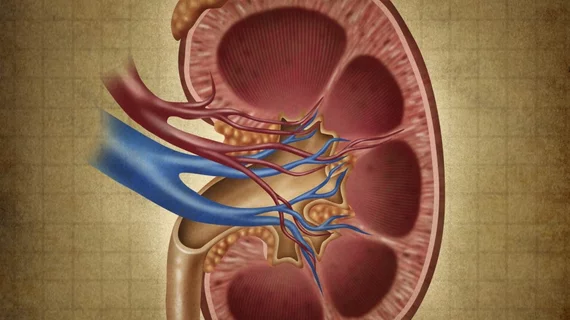ASTRO 2018: High-dose radiation therapy safe for kidney cancer patients with a single kidney
Using high-dose, high-precision radiation therapy to treat renal cell carcinoma (RCR) is safe for patients with one kidney, according to findings presented at the American Society for Radiation Oncology (ASTRO) annual meeting in San Antonio, Texas.
RCR is a common form of kidney cancer among adults, responsible for nearly 15,000 deaths in the United States each year. Surgery is the most common treatment, followed by tumor ablation, but stereotactic ablative radiotherapy (SABR) represents a potential alternative. Previous research published in Cancer found SABR was save for RCR patients who still have two kidneys; these new findings confirm it is safe for patients with one kidney as well.
“Although RCC historically has been considered resistant to conventional radiation therapy, the high doses and high precision achievable with SABR overcome this resistance,” lead author Rohann J.M. Correa, MD, PhD, of London Health Sciences Center in London, Canada, said in a prepared statement. “Kidney SABR is thus emerging as a versatile, non-invasive outpatient treatment requiring one visit or a few visits. Our analysis demonstrates SABR to be highly effective with minimal side effects for RCC patients with a single kidney.”
Researchers analyzed data from 81 patients with a single kidney who underwent SABR. The average age at the time of treatment was 67.5 years old, 69 percent of the patients were male and the median radiation therapy dose was 87.5 Gray (gy). Median follow-up was 2.6 years.
Overall, 98 percent of patients with a single kidney who underwent SABR had two-year local control. Ninety-eight percent also had a two-year cancer-specific survival rate of 98 percent. Rates were “not significantly different” from patients with two kidneys who underwent SABR, according to the authors.
Renal function was “modestly" impacted by SABR, though none of the patients with a single kidney required dialysis.
“We were somewhat surprised that SABR could achieve such a high local control rate without more significantly impacting renal function in the solitary kidney setting,” Correa said in the same statement.
The ASTRO Annual Meeting is Oct. 21-24 at the Henry B. Gonzalez Convention Center in San Antonio.

